When is clean sufficiently clean?
Regardless of whether the cleaning tasks are simple or very demanding, the quality of part and surface cleanliness is an important quality and competitive factor. In this context, the demand for needs-based and economical cleaning solutions continues unabated. But when is clean sufficiently clean?
Cleanliness – a relative parameter
In the technical sense, the term "cleanliness" is understood to mean the absence of foreign bodies on surfaces, i.e. of substances that can impair the service life, use or further processing of the parts (1). Depending on the purpose of the components, the required degree of cleanliness varies, i.e. in some industries, simple cleaning steps may be sufficient, whereas in others, such as the automotive industry and its supply industry, a more complex cleaning process in the sense of clean production is necessary. Particularly demanding industries, such as the semiconductor industry or medical engineering, work under clean room conditions at the highest level of cleanliness. The question: "How clean is clean?" therefore cannot be answered globally, but in view of the different production methods is subject to individual standards. This in turn makes it difficult to determine the cleanliness values in an appropriate manner.
As clean as necessary – The definition of cleanliness
From an application point of view, the search for the optimum cleaning process raises two issues: 1. The needs-oriented definition of cleanliness and 2. the economical way to get there. As far as the specifications for surface quality are concerned, the challenge lies in finding the right balance between requirements and economic efficiency. A first step towards a factual assessment of the cleanliness requirements and thus towards a demand-oriented process design is the simple principle "as clean as necessary". It offers the opportunity to create, by means of precise analyses with the client, those margins which guarantee an economic cleaning performance. In order to make this possible, precisely formulated specifications focused on cleaning are desirable from the point of view of the manufacturers of cleaning machines. In practice, however, these are usually very vague and formulated with insufficient focus on cleaning. The same applies to parts drawings or references to standards or bodies of rules and regulations. If the specifications also do not include details on the required residual dirt analysis method, test cleaning phases are unnecessarily prolonged due to errors and misunderstandings. The suitable extraction method is found much faster and above all more reliably if the definition of the cleanliness values also specifies the appropriate analysis method. Information on this can be found, for example, in VDA Guideline 19.1. Based on the validated decay curve of the analysis method, application engineers can sample the cleaning material beforehand and determine whether the respective particle load removed is decreasing sufficiently and the selected cleaning parameters lead to the required result.
The path to cleanliness requires a view of the entire production chain
Technical cleanliness is not a number with a physical unit of measurement such as temperature or length, but is made up of a large number of numerical values (numeric matrix), which in turn are subject to strong statistical fluctuations. On the way from development and design to the final product, many different parameters influence the required surface quality of the parts. This means that all these influences along the process chain must already be taken into account at the beginning of product planning in order to reach a cleanliness definition (2). One of the main criteria against which cleanliness values can be measured is the operation that follows directly after cleaning, such as metalworking, forming, coating, assembly, storage or transport (3). It specifies to what extent the contamination must be removed or which surface condition is to be achieved. Requirements on a suitable surface can be: Open-porousness, gliding capability and weldability, reactivity for chemical surface treatments, adhesion, paintability, etc. In order to achieve the necessary surface quality, the following questions ultimately play a decisive role: Which materials are cleaned? What are the part properties in terms of size and geometry? At what point in the production process are the parts contaminated? Which regions of the parts must meet the cleanliness criteria? Are there primary and secondary part surfaces? Is partial cleanliness of functional surfaces with higher demands required? Is the contamination of a filmic or particulate nature or is it a mixture of these? What impact can the contaminations have on the subsequent process?
These questions should be discussed already during the development and design phase and should always adopt the perspective of cleaning. This may also mean that the preceding process step and the resulting contaminations can be decisive. In addition, it is advantageous for cleanliness if the cleaning process and the production step for which the surface quality is produced form a unit in terms of time and space. This should also be the case if the parts are taken off-site for further processing, such as to a contract hardening shop or for a bonding process. In both cases, contract manufacturers know exactly what cleanliness is required for the process. If cleaning takes place directly at the contract manufacturer's premises, contaminations caused by transport or storage are excluded from the outset and the component quality remains guaranteed.
The cleaning quality - a result of continuous monitoring
In order to ensure that clean individual parts also result in clean products, the cleanliness of a workpiece should be monitored throughout the entire production cycle. The pertinent defined cleanliness values alone are no guarantee that the surfaces of the workpieces will reach the next step in the required condition. In the course of production there are numerous possibilities of recontamination, which is why it may be necessary to clean parts several times at different points of the production process. In order to make the right decision in this regard, continuous residual dirt analyses are necessary to ensure that the surface quality remains constant until further treatment or processing. This involves consistent quality assurance across the various departments. This creates the prerequisites for avoiding new contamination in plant management and maintenance, in the assembly environment, in logistics, through personnel and further handling.
VDA Guideline 19.1 and ISO 16232, Volume 1 for instance, provide a basis for assessing cleaning quality. VDA Volume 19.2 entitled "Cleanliness in Assembly - Environment, Logistics, Personnel and Assembly Equipment" is another helpful guide to the generation of technical cleanliness of parts.
The definition of cleanliness - a joint project
As the above sections show, technical cleanliness is a task for the entire process chain, which is why a partnership between clients and contractors and their in-house departments such as design, production, quality assurance, occupational safety and logistics is indispensable for realistic, factual cleanliness expectations. Only through a direct transfer of knowledge between the various disciplines will it in future be possible to make the in any case ever decreasing tolerances effectively usable for all parties involved and to ensure the competitive production of high-quality products. In addition, close cooperation provides the necessary basis for root cause analysis if the results of the particulate cleanliness test are not met. Then all relevant interfaces are on board and can effectively contribute to error detection and avoidance.
Notes on the author:
Tobias Lutz is a graduate engineer and application engineer at MAFAC.
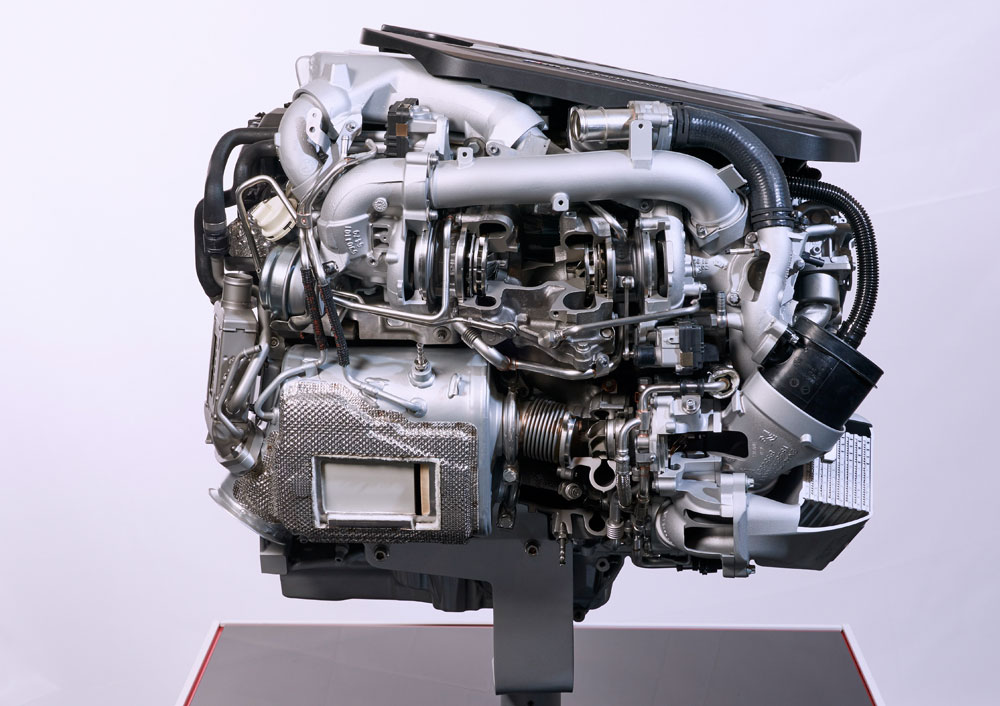
An engine is the product of the highest engineering skills and innovative strength. Approximately 450 individual parts per engine are fine-machined and assembled with a precision of 0.001 millimetres. Technical cleanliness plays a fundamental role in this regard. Image source: BMW AG
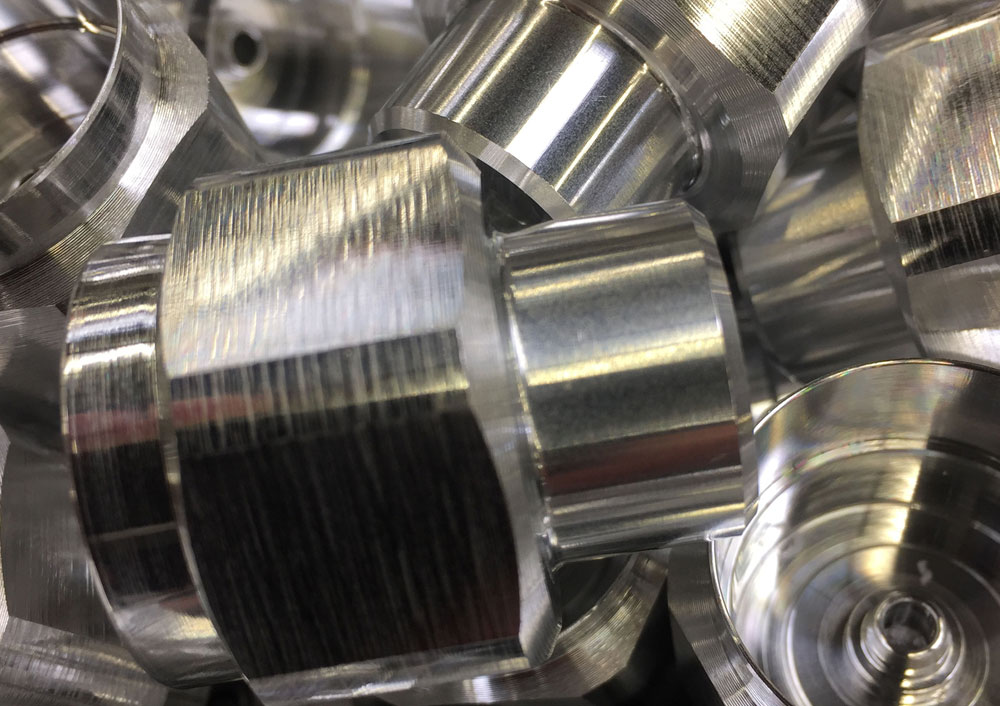
In machining and forming operations, parts cleaning may be necessary after each processing step in order to remove lubricants and cooling lubricants or drawing greases for the subsequent step. Image credits: Grieshaber
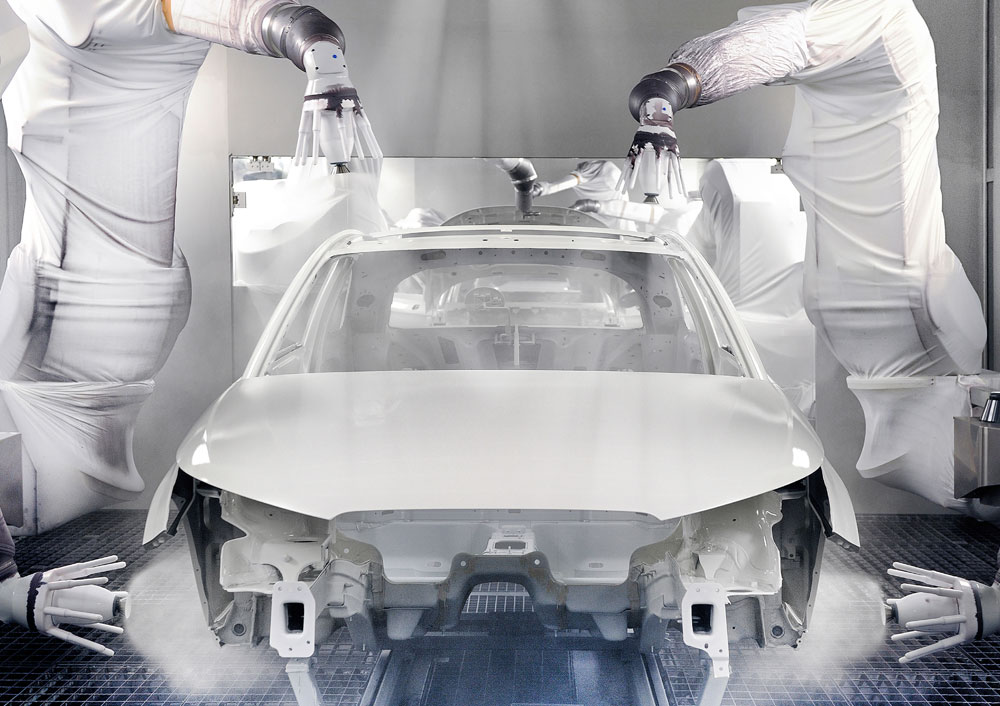
Subsequent processes such as painting require flawless, grease- and particle-free surfaces. Smallest remaining impurities can lead to adhesion problems or to the formation of blisters. Image source: Audi

If heat treatment is required, intermediate cleaning should be carried out beforehand to avoid unevenly oxidized spots.
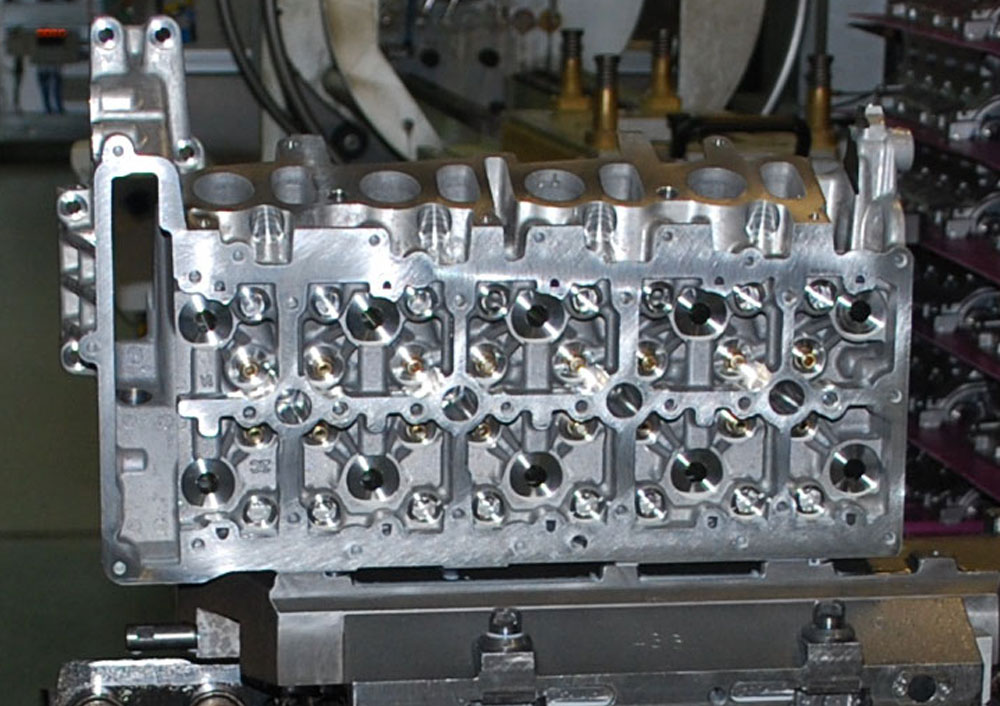
Cylinder heads are manufactured in fast-cycle production lines and subjected to highly sensitive quality measurements. This requires a high-quality cleaning of machining residues such as lubricants and chips beforehand. Image source: BMW AG.
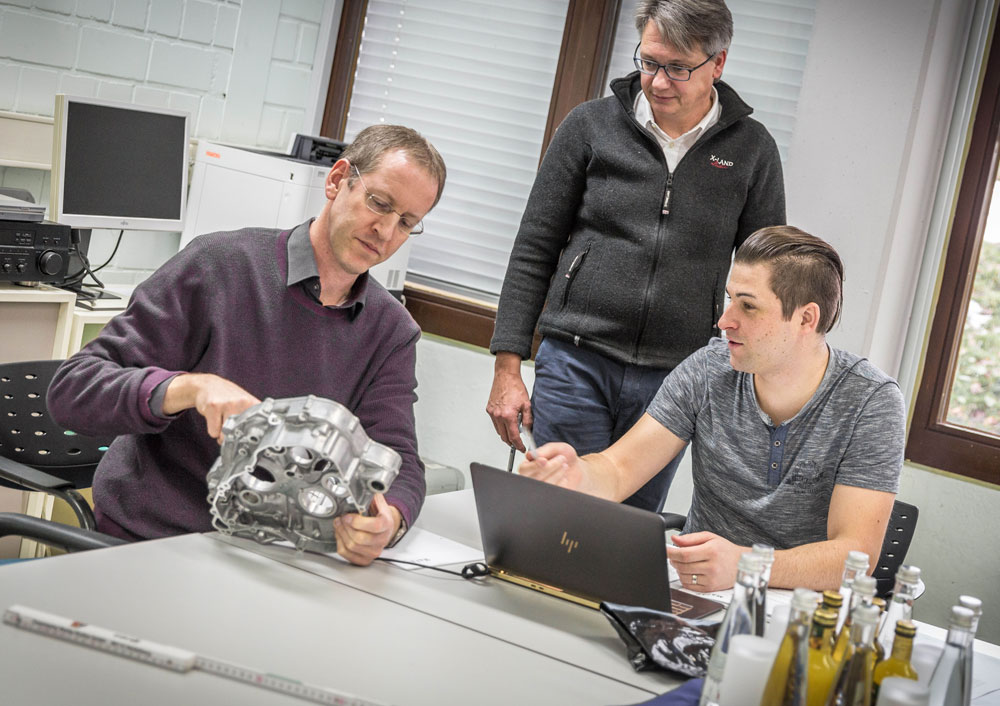
When defining technical cleanliness, the partnership-based cooperation between client and contractor creates the necessary foundation for realistic and factual cleanliness expectations.
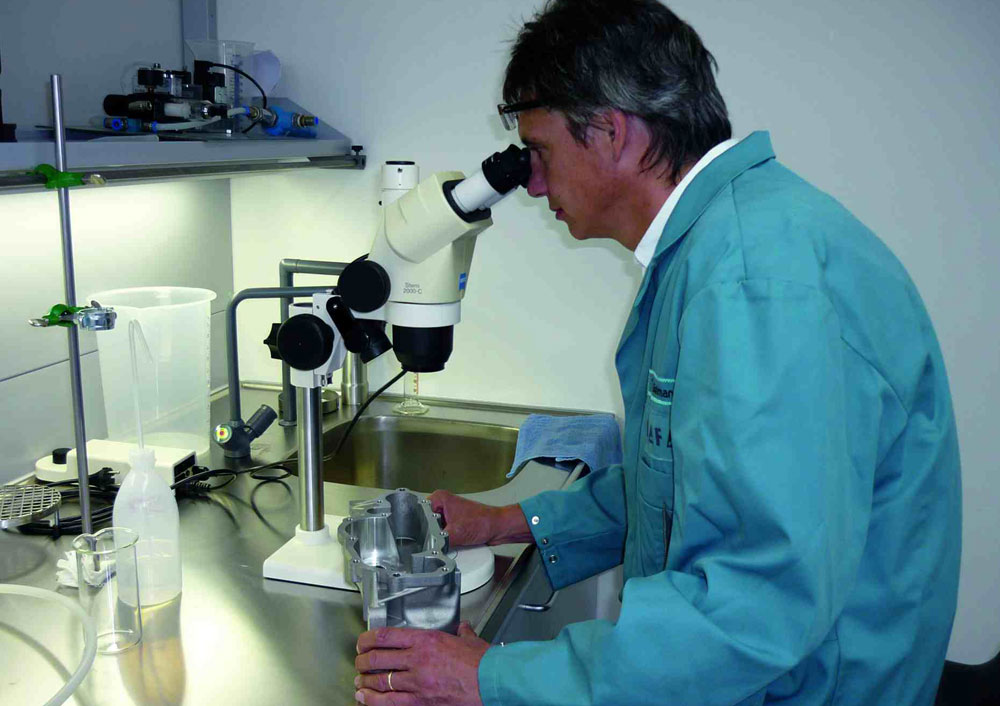
Continuous monitoring of the surface quality after cleaning ensures the required cleaning quality. This does not only include inspections of the cleaning material, but also the constant monitoring of the cleaning system and its surroundings.
(1) Jelinek, T. W. (1999): Reinigen und Entfetten in der Metallindustrie. (Cleaning and degreasing in the metal processing industry.) Saulgau/Württemberg, Eugen G. Leuze Verlag, p. 26
(2) Fachverband für Industrielle Teilereinigung e. V. [Professional association for industrial parts cleaning] (editor), (2017): Leitlinien für eine qualitätssichernde Prozessführung in der Bauteilreinigung. (Guidelines for quality-assuring process control in parts cleaning.)
(3) Kowallik, M., Losch, A., Mang, T. (Ed.), (2014): Industriereiniger. (Industrial cleaners.) Berlin/Heidelberg, Springer, p. 8.
back to last page
back to overview


